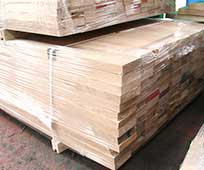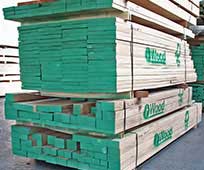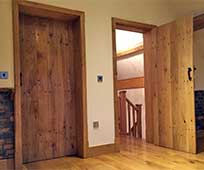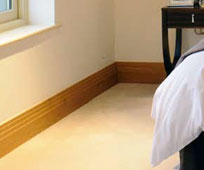Sapele - Buy Online
Sapele is a moderately durable timber that is fairly easy to work with and can be finished well with a high polish or with staining. Sapele is frequently used in furniture and cabinet making, boat building, joinery and for flooring.

Get prices for Sapele
Please note that these images are to illustrate product type only and are not species specific.
Sapele Information
Appearance
When dried, Sapele darkens to a reddish-brown, similar to mahogany featuring a regular stripe.
Other Names
Sapelewood ; aboudikro ; sapelli. Entandrophragma cylindricum, Family: Meliaceae
Distribution
It is found in the rain forests of West Africa from the Ivory Coast through Ghana and Nigeria to the Cameroons, and it extends eastwards to Uganda and Tanzania. The tree A very large tree with cylindrical bole and small or no buttresses. Grows to a height of 45m or more, and a diameter at breast height of 1.0m or slightly more.
The Timber
The sapwood is pale yellow or whitish, the heartwood pinkish when freshly cut, darkening to typical mahogany colour of reddish-brown. Sapele is characterised by a marked and regular stripe, particularly pronounced on quarter-sawn surfaces. Occasionally mottle figure is present. It is fairly close textured, and the grain is interlocked. It is harder and heavier than African mahogany, weighing about 640 kg/m3 when dried. It has a pronounced cedar-like scent when freshly cut.
Drying
The timber dries rapidly with a marked tendency to distort. Quarter-awn material is less liable to degrade in drying.
Strength
Sapele is much harder than African or American mahogany, and in resistance to indentation, bending strength, stiffness, and resistance to shock loads, is practically equal with English oak.
Durability
Sapele wood is moderately durable.
Working Qualities
Works fairly well with hand and machine tolls, but the interlocked grain is often troublesome in planning and moulding, and a reduction of cutting angle to 15 degrees is needed to obtain a good finish. It takes screws and mails well, glues satisfactorily, stains readily, and takes an excellent polish.
Uses
Constructional and decorative veneer, furniture, cabinet-making, shop-fitting, boat-building, panelling, flooring, joinery.







 Main Menu
Main Menu





